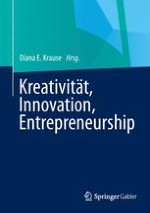
2013 | OriginalPaper | Buchkapitel
1. Zum Verständnis von Kreativität am Arbeitsplatz: Ein Überblick zu verschiedenen Ansätzen der Kreativitätsforschung
verfasst von : Jing Zhou, Christina E. Shalley
Erschienen in: Kreativität, Innovation, Entrepreneurship
Verlag: Springer Fachmedien Wiesbaden
Aktivieren Sie unsere intelligente Suche, um passende Fachinhalte oder Patente zu finden.
Wählen Sie Textabschnitte aus um mit Künstlicher Intelligenz passenden Patente zu finden. powered by
Markieren Sie Textabschnitte, um KI-gestützt weitere passende Inhalte zu finden. powered by